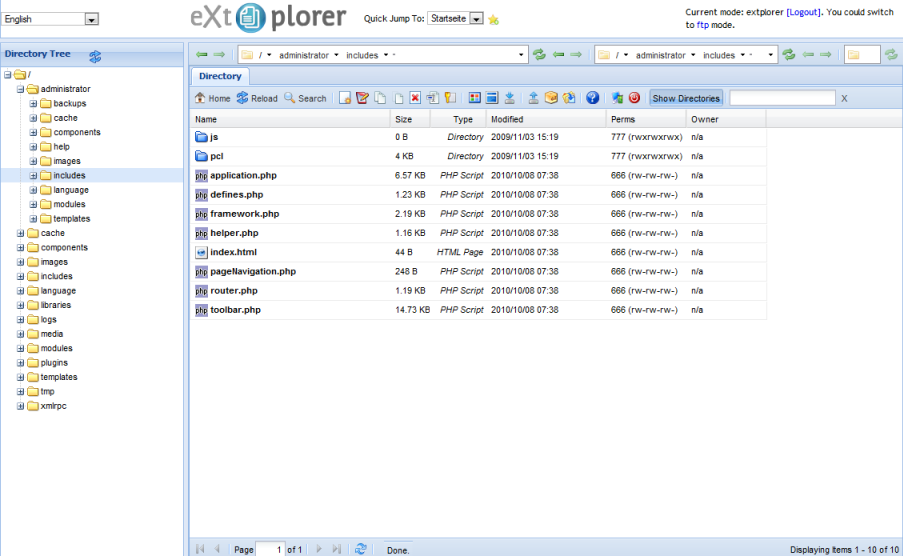Self Hosted FTP
-
-
@WingCreative said:
Those would be my first thoughts. You can just use WebDAV too, like SharePoint does.
-
Alfresco would do it too.
-
What about a WordPress Uploader Plugin?
-
-
-
-
that is seriously ugly
-
-
Would not take too much to build a custom solution too, maybe in PHP.
-
Webmin also has a file manager.
-
@scottalanmiller said:
If you are on Windows I would stick with IIS.
This is why you don't let a Unix admin do a Windows admin's job.

IIS FTP, be it 6, 7, or 8, sucks ass. Securing it is a pain in the ass, it eats resources badly, and only offers FTPS for secure transfer. If all you need is FTP, Filezilla Server does a better job, with less resources, and higher scaling. It doesn't do it all, e.g. SFTP/FTPS, but it's certainly better than IIS FTP. Just having the autoban feature is worth not using IIS FTP.
Once you get into paid FTP daemons, you get some real options. Ipswitch WS_FTP Server can do everything and anything. You want AD integration, restricting directory access by the hour and by the user? That's what you get with better applications.
-
Not saying it is good, but if you are running Windows for FTP you have bigger issues. IIS is just fine. Why use Windows for FTP when Linux does it so well?
-
If a critical requirement for the application is compatibility across all operating systems, then I assume you don't have full control over the systems that will be accessing it.
If there's any chance that people will be uploading things on a WiFi connection then SFTP/FTPS/some sort of encryption should be a critical requirement as well. Jussayin.
-
If you're using a Linux client with nautilus you can click connect to server. Then just type ssh://user@server. If you have keys set up you don't need a password. You can browse the file system through nautilus just like any other folder and it's secure through ssh.
-
@johnhooks said:
If you're using a Linux client with nautilus you can click connect to server. Then just type ssh://user@server. If you have keys set up you don't need a password. You can browse the file system through nautilus just like any other folder and it's secure through ssh.
That works great but it does it by not using FTP. If we could get by without FTP this whole conversation would be moot.
And it turned out that FTP was not what he needed but actually a web page. So the FTP part turned out to be a red herring once we probed a bit.
-
@scottalanmiller said:
@johnhooks said:
If you're using a Linux client with nautilus you can click connect to server. Then just type ssh://user@server. If you have keys set up you don't need a password. You can browse the file system through nautilus just like any other folder and it's secure through ssh.
That works great but it does it by not using FTP. If we could get by without FTP this whole conversation would be moot.
And it turned out that FTP was not what he needed but actually a web page. So the FTP part turned out to be a red herring once we probed a bit.
Ok. How would you do passwordless logon and have it know which clients were logging on?
-
@johnhooks said:
Ok. How would you do passwordless logon and have it know which clients were logging on?
You can't. Not really a login at that point. Just wide open. Unless you want to do something like take a username but no password (FTP basically does this with anonymous) or do weird things like guess.
-
@scottalanmiller said:
@johnhooks said:
Ok. How would you do passwordless logon and have it know which clients were logging on?
You can't. Not really a login at that point. Just wide open. Unless you want to do something like take a username but no password (FTP basically does this with anonymous) or do weird things like guess.
Ok I wondered. This kind of threw me off (why I suggested ssh with keys):
Password less logon (for clients or vendors etc) and custom sites for different clients.
So we could have our top level "Owners" and then Client1 Client2 Client3 all with distinct FTP pages (and custom logon information for each site)I didn't know how that was possible.
-
@johnhooks said:
So we could have our top level "Owners" and then Client1 Client2 Client3 all with distinct FTP pages (and custom logon information for each site)
I didn't know how that was possible.
That's because it is actually a web application and not FTP
 FTP doesn't have pages.
FTP doesn't have pages.

